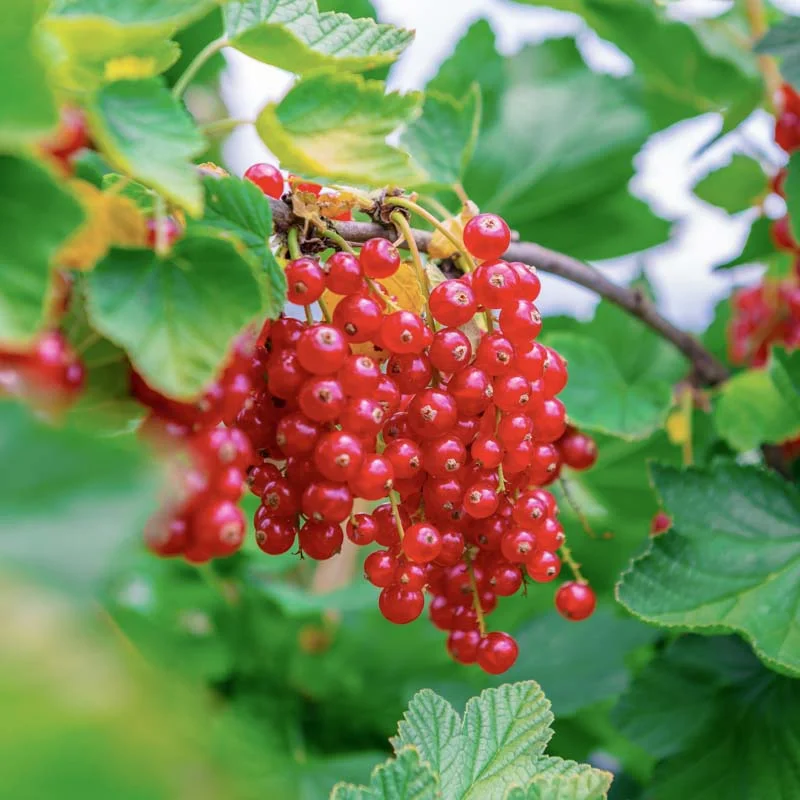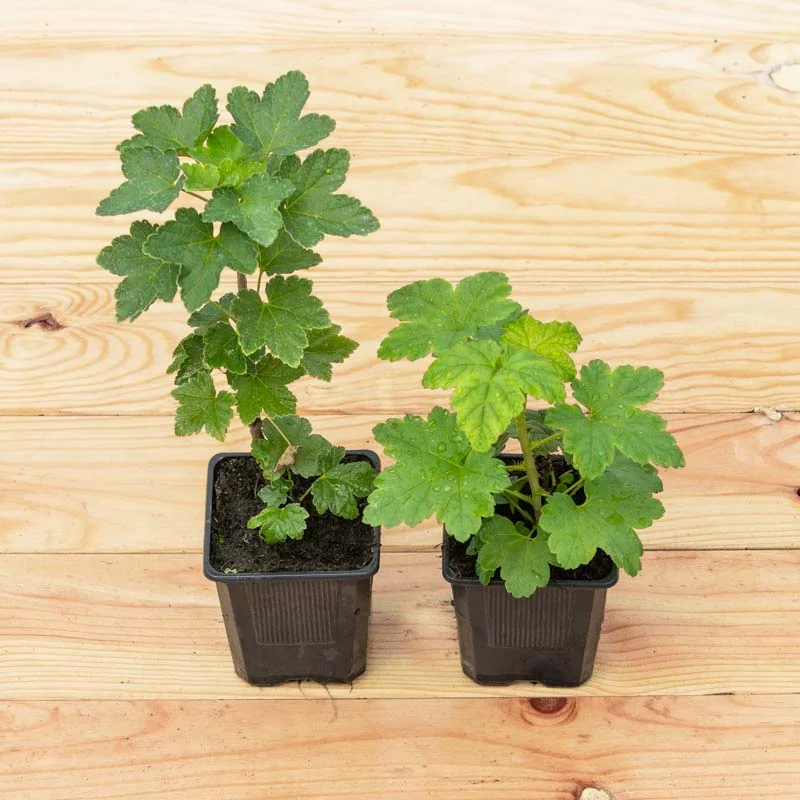Junifer" currant 2 organic plants
Grow redcurrants for their beauty and flavor, and enjoy generous harvests of long bunches covered with sparkling little delights!
Self-fertilizing "Junifer" redcurrants, early and very productive, form a small shrub and offer an abundance of bunches with discreet greenish-white flowers, very mellifluous, followed by delicious, round, bright red fruits, well-scented, sweet and tart. These tasty berries can be eaten fresh or dried, or made into jam, jelly, wine or liqueur.
REDCURRANTS: WHEN AND HOW TO PLANT?
Gooseberry plants can be grown as isolated bushes in the garden or as hedges. Plant them in a place sheltered from strong winds and with a sunny exposure, except in hot regions where it's advisable to plant them in a semi-shaded spot.
Although redcurrants thrive best in the most fertile soils, all cool, well-drained soils are suitable. Apply a generous dose of leaf compost or well-decomposed manure a month before planting.
Plant gooseberries ideally in autumn, from September to November, or in spring, from March to May:
- dig a hole ;
- place the root ball 5 cm below ground level and close with the soil you've dug out;
- space the plants 1 to 1.5 m apart in all directions;
- apply a generous amount of well-decomposed manure or compost at the base of the plant;
- prune all stems just after planting, above the second bud from the ground upwards;
- mulch currant bushes;
- water.
WHEN AND HOW TO PRUNE REDCURRANTS?
The redcurrant naturally forms a clump, with new shoots emerging from the ground every year. To encourage the growth of new shoots and keep the bushes in balance, we recommend pruning in February of each year.
Eliminate very dark stems by cutting them off at the base, and keep 15 to 20 healthy stems per plant. When the plant is well established, prune the terminal end after the fifth bud, and the lateral stems after the fourth or fifth outer bud, to encourage branching.
HOW TO CUT REDCURRANTS?
Redcurrants root easily and can be propagated by cuttings in autumn, in October:
- dig a V-shaped trench 15 to 20 cm deep ;
- spread sand at the bottom for good drainage;
- choose a variety of healthy, beige to brown, fully lignified shoots of the year;
- cut these shoots just above the second bud from the base;
- remove the non-lignified end, by pruning above a bud, so that the cutting measures 20 to 25 cm in length;
- plant each cutting vertically, 15 cm apart, in the trench;
- fill the trench with a mixture of soil and sand, so that only two buds protrude from the ground;
- pack lightly;
- keep moist, especially in summer.
Around November of the following year, carefully remove the cuttings with a spading fork and replant them in their final position.
CURRANT BUSHES: DISEASES AND PESTS?
Redcurrants can be attacked by various pests:
- mealybugs: these form clusters on the branches, weakening the plant's growth;
- Aphids: these cause leaf deformations such as curling or waffling;
- mites: present in colonies on the underside of leaves or on buds, they induce leaf deformation and thus limit the proper development of plants.
Regularly monitor the health of your currant plants to avoid any risk of infestation. In the event of attack, clean affected plant parts with a cloth soaked in a mixture of hot water and black soap, or remove them in the event of heavy infestation.
Regularly apply a fermented extract of nettle, horsetail or comfrey to strengthen the plants.
Certain diseases can also affect currants:
- powdery mildew: covers the above-ground parts with a characteristic white felting;
- anthracnose: this fungus can be spotted by the appearance of reddish to brown spots bordered with black on leaves, stems or fruit;
- Rust: the upper surface of leaves is covered with small yellow-brown spots, while the underside is covered with orange pustules;
- Eutypa lata: this fungus causes twigs to die back from tip to base.
All preventive measures must be applied systematically, because once a disease has been declared, it is difficult to get rid of it completely.
- Prune shrubs annually to remove old or tired branches, and aerate plants.
- Use clean, disinfected tools when pruning.
- Apply fermented horsetail, comfrey or nettle extracts to strengthen plants.
- Space the plants as far apart as possible and place them in a sunny spot.
Shipping and delivery of redcurrant plants
Orders are dispatched every Wednesday.
- Shipment to mainland France only.
- Shipping cartons designed for optimal plant protection.
- Free shipping does not apply to plants.










